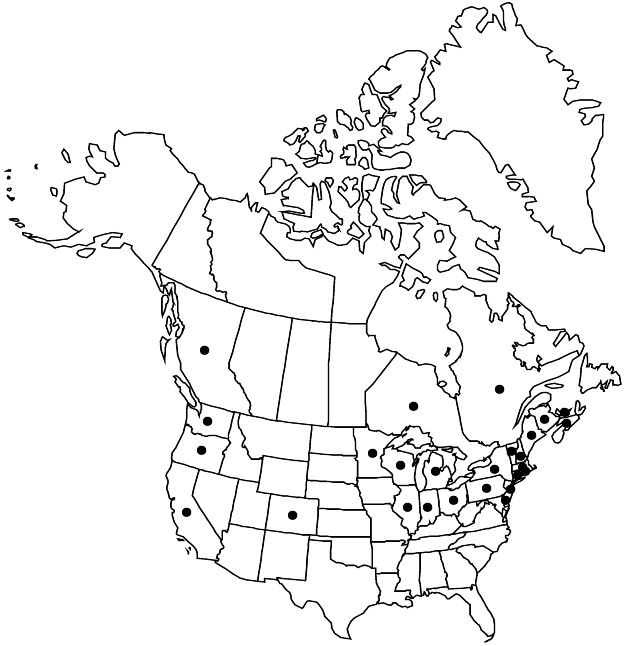Crataegus monogyna var. monogyna
Shrubs or trees, 40–100 [–120] dm. Stems: twigs: new growth glabrous; stipules of flowering shoots ± entire; thorns on twigs few to numerous, usually indeterminate and terminal, 0.7–1 cm, when determinate and lateral ± stout, to 2.4 cm. Leaves: petiole slender, 1–3 cm, glabrous, eglandular; blade ovate to deltate, 1.2–5.5 cm, base cuneate to truncate, lobes 1–3 per side, sinuses usually deep, lobe apex acute, margins weakly and often few-toothed at lobe apices, veins 2–5 per side, apex acute, abaxial surface paler green, villous on major veins, adaxial ± lustrous dark green, glabrous or mainly villous. Inflorescences 5–15-flowered, ± lax; branches glabrous [to villous]; bracteole margins entire or bearing few to numerous glands on small irregular protuberances or on small pegs. Flowers 8–16 mm diam.; hypanthium glabrous [to lanate]; sepals 1.5–2.5 mm, margins entire, apex acute or obtuse; stamens 15–20, anthers pink-purple; style 1. Pomes sometimes bright, usually dark red, orbicular to ± cylindric, 6–11 mm diam.; sepals reflexed; pyrene 1.2n = 34, 51.
Phenology: Flowering Apr–May; fruiting Sep–Oct.
Habitat: Brush, woodland edges and old pastures in medium rainfall areas
Elevation: 10–800 m
Distribution

Introduced; B.C., N.B., N.S., Ont., P.E.I., Que., Calif., Colo., Conn., Del., Ill., Ind., Maine, Mass., Mich., Minn., N.H., N.J., N.Y., Ohio, Oreg., Pa., R.I., Vt., Wash., Wis., Europe, sw Asia, n Africa, also in South America (Argentina), also in South America (Chile), s Africa, Pacific Islands (New Zealand), Australia
Discussion
Variety monogyna differs from var. lasiocarpa (Lange) K. I. Christensen in the absence of villous abaxial leaf surfaces and inflorescences. Variety monogyna is distributed throughout the area of the species; var. lasiocarpa primarily occurs in the Balkan, Iranian, and Mediterranean areas, and is most common in Greece.
Variety monogyna is locally common in the Pacific Northwest and adjacent Canada, as well as from the Great Lakes to the Atlantic. The variety hybridizes in North America with the diploid species Crataegus suksdorfii and rarely with C. punctata. The hybrid with C. laevigata, C. ×media Bechstein, is well known in the wild in Europe; only its cultivars are seen in North America.
Selected References
None.
Lower Taxa
"thin" is not a number."adnate" is not a number."dm" is not declared as a valid unit of measurement for this property.